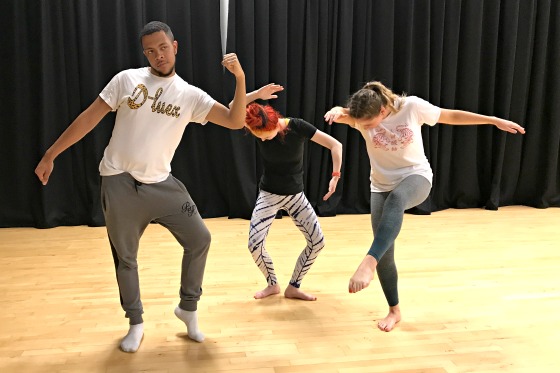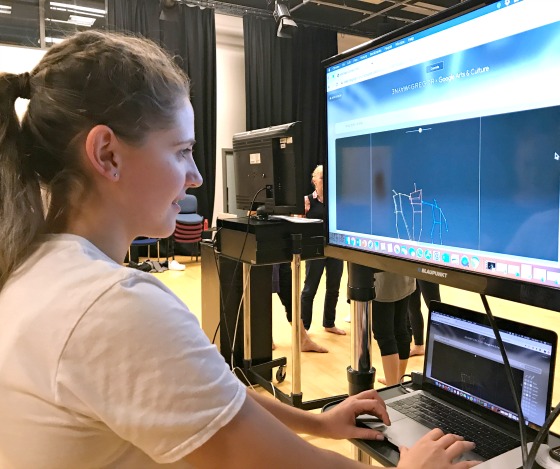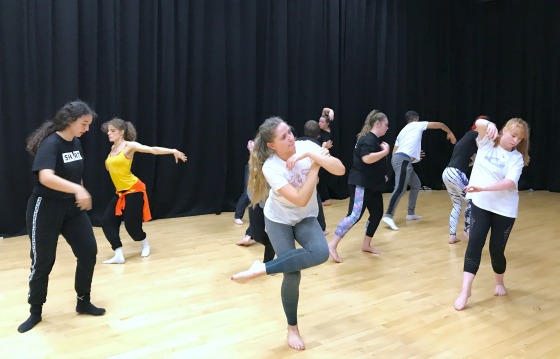De Montfort University Leicester (DMU) dancers are among the world’s first to test an innovative AI-driven tool created by award-winning British choreographer Wayne McGregor.

Eli, Paige and Millie
Developed with Google Arts and Culture and based on hundreds of hours of video footage - both from the choreographer’s archives and from the ten dancers in his company - the ground-breaking tool can generate its own independent choreography.
In one of its many functions, it records dance through a webcam and uses the data to develop new moves, mapping the “skeleton” of a dancer in a particular pose by drawing points between the different parts of their anatomy.
It then runs this through three different algorithms to suggest what the next pose could be.
Dance and Performing Arts students had the valuable opportunity to test the tool, thanks to DMU lecturer Kerryn Wise, a digital dance artist who is part of an exclusive network of experts chosen by Studio Wayne McGregor and Google to pilot the software with different user groups.

Millie exploring the tool
During their session, students worked in groups to explore the tool’s potential through a number of choreographic tasks, discovering new ways of moving and creating original dance routines. Their feedback will inform how the tool could be developed and used in the future.
Kerryn said: “The tool is not about replacing the choreographer, it’s about extending the vocabulary of dancers, helping them to do something they may not have naturally done through pure improvisation.
“It’s a really quick way of creating choreography, especially if you’re stuck for ideas, and a fantastic starting point to add your own creative interpretation to.
“There are so many ways to use it to spark creativity, as well as to be experimental with it and explore ways of using it live on stage. It’s exciting to think about its potential and that’s what this pilot is all about.”

A group performance
Dance graduate and Performance Practices MA student Paige Lindahl was one of the workshop participants.
“My practice is about exploring gender in dance and I’ve not really worked with technology much, so I was excited to trial a tool that has been created by such a brilliant mind,” she said.
“I found it completely accessible and it felt nice to finally have a new way of making material. There are lots of old and honoured methods in dance so it was good to try something fresh.”
RELATED NEWS
Discover what DMU has to offer at our next Open Day
Dance graduates take centre stage at Lithuanian festival
Performing Arts grad gets through to final of BBC TV song contest
Second-year Performing Arts student Millie Bottomley said: “It’s a really great tool for performing artists because our course is very contemporary, merging real life with digital realities.
“It helps you to create abstract movement instead of traditional dance sequences, which is really useful. I had a lot of fun playing with it and it gave me the freedom to go where I wanted to take it.”
Eli Green, also a second-year Performing Arts student, said: “At the moment, the tool can only record three seconds of your movement at a time. Although this can be limiting, it really keeps you on your toes and you discover new ways of thinking.
“I found it really helpful to feed it movement from just one part of my body to see what it suggested for the rest. As a dancer you can get stuck sometimes, so having new options is always good.”
Posted on Thursday 24 October 2019